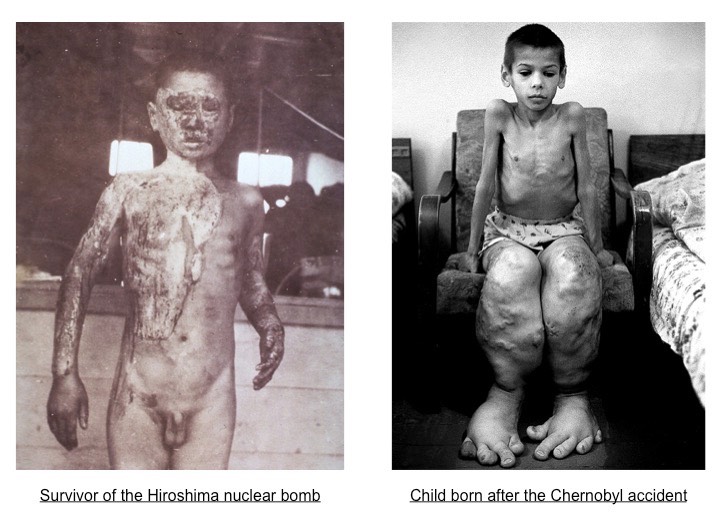![]()
Understanding:
• Radiation and mutagenic chemicals increase the mutation rate and can cause genetic diseases and cancer
A gene mutation is a change to the base sequence of a gene that can affect the structure and function of the protein it encodes
- Mutations can be spontaneous (caused by copying errors during DNA replication) or induced by exposure to external elements
Examples of factors which can induce mutations include:
- Radiation – e.g. UV radiation from the sun, gamma radiation from radioisotopes, X-rays from medical equipment
- Chemical – e.g. reactive oxygen species (found in pollutants), alkylating agents (found in cigarettes)
- Biological Agents – e.g. bacteria (such as Helicobacter pylori), viruses (such as human papilloma virus)
Agents which increase the rate of genetic mutations are called mutagens, and can lead to the formation of genetic diseases
- Mutagens which lead to the formation of cancer are more specifically referred to as carcinogens
Types of Mutagens

![]()
Application:
• Consequences of radiation after nuclear bombing of Hiroshima and accident at Chernobyl
The nuclear bombing of Hiroshima and accident at Chernobyl are two examples of a catastrophic release of radioactive material
- The nuclear bombing of Hiroshima (and Nagasaki) occurred in August 1945, during the final stages of World War II
- The Chernobyl accident occurred in April 1986, when an explosion at the reactor core caused the release of radioactive material
Of the two incidents, more people died from the nuclear bombing, but the meltdown released far more radiation (~400×)
- The Chernobyl meltdown involved far more fissionable material and produced different isotopes with much longer half-lives
- The Hiroshima nuclear bomb was detonated above ground and radiation was dispersed, resulting in less irradiation of the soil
Some of the long-term consequences of radiation exposure following these disasters include:
- An increased incidence in cancer development (with a strong correlation between dose of radiation and frequency of cancer)
- Reduced T cell counts and altered immune functions, leading to higher rates of infection
- A wide variety of organ-specific health effects (e.g. liver cirrhosis, cataract induction, etc.)
Some of the consequences of radiation exposure are specific to the incident due to the types and amounts of radiation released
- Thyroid disease was a common consequence of the Chernobyl accident due to the release of radioactive iodine
- There was no significant increase in birth defects following the Hiroshima bombing, but an estimated 250% increase in congenital abnormalities following the Chernobyl meltdown
Whereas Hiroshima is still habitable and well populated, certain regions of Chernobyl remain unsafe for human habitation
- There is anecdotal evidence to suggest that radiation levels around Chernobyl have caused variation to local flora and fauna
- The presence of residual radiation in the environment can become concentrated in organisms via bioaccumulation
Consequences of Radiation Exposure

Link: At Chernobyl, Hints of Nature’s Adaptation
